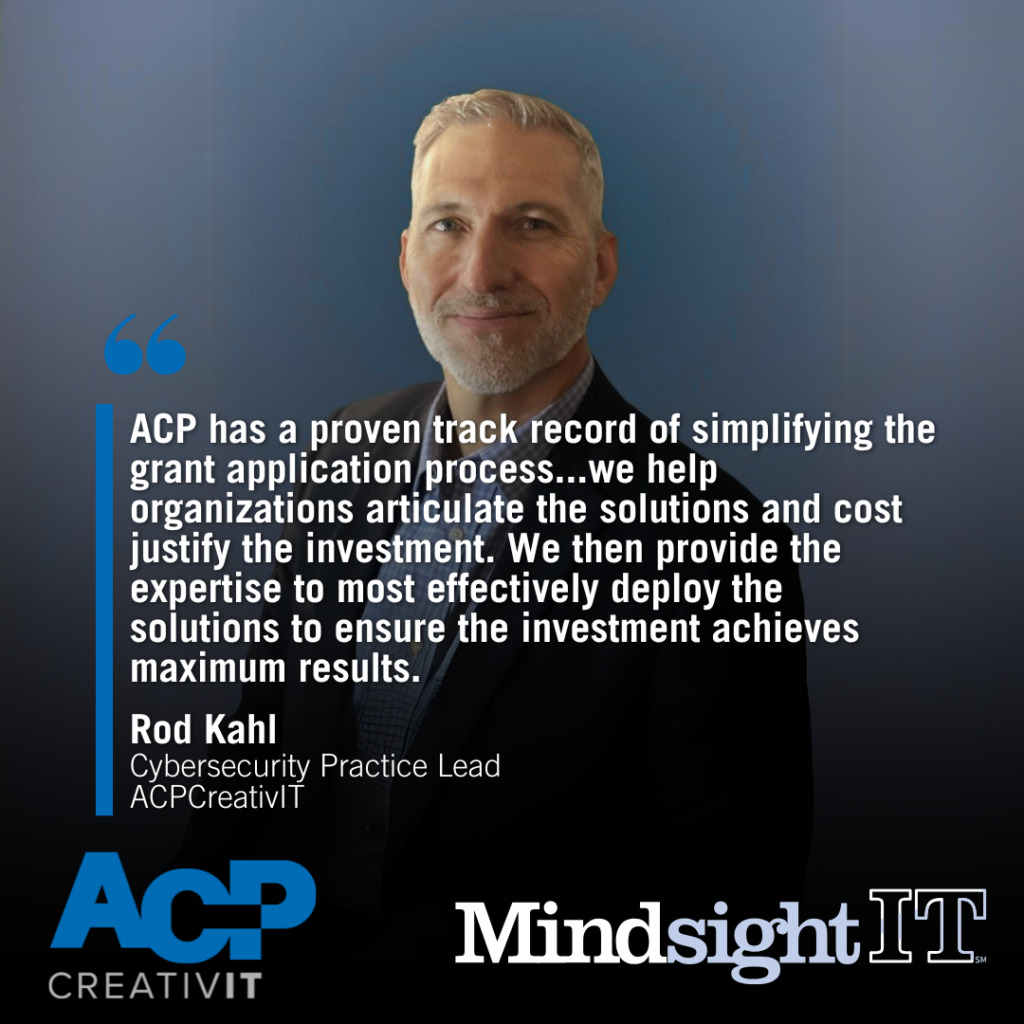June 11, 2025
The Breach Before the Budget
It’s no longer “if.” It’s “how bad” and “how fast.” Ransomware and other cybersecurity threats don’t wait for legislative sessions or RFP cycles, and neither should your funding strategy. Fortunately, federal and private cybersecurity grants can cover real security needs if you align to the right frameworks.
Federal and Private Cyber Grants: The Basics
Let’s unravel the grant alphabet soup. If you’re part of a local government, K–12 district, or Tribal nation, odds are there’s free money on the table, you just have to match the right program to your situation.
Start with SLCGP, the State and Local Cybersecurity Grant Program. Your state holds the purse strings, but K-12, counties, and cities are all eligible. Tribal governments? You’ve got your own stream of money to tap in to, TCGP (Tribal Cybersecurity Grant Program) and hardship waivers can often cover your match entirely.
K-12 schools and libraries can also access the FCC Cybersecurity Pilot, a $200M fund running through 2026, no match required. Just mind the deadlines: the application window is tight (March to September).
Finally, major players like AWS and Microsoft offer their own credits and training funds. Competitive? Yes. Worth the effort? Also yes—especially when you’re trying to fund cloud-based tools without blowing your budget.

What They Actually Pay For (and What They Don’t)
Let’s be real: what can you actually buy with these grants?
If it plugs directly into the NIST Cybersecurity Framework, or whatever version exists in your state, you’re probably good to go. That means it covers people (like vCISO hours, SOC analysts, or overtime for incident response), technology (firewalls, SIEM, MFA, endpoint protection), and governance (risk assessments, tabletop drills, policy updates). Even training programs and outreach efforts for students or Tribal communities are included in this program.
“Add just one of those controls—picture rolling out MFA across every privileged account—and you’ve instantly lopped off a huge slice of your attack surface.” Says ACP’s Rod Kahl. “Phishing kits that rely on stolen passwords, credential stuffing bots, and brute force sprays now slam into an extra wall of verification. In most security posture assessments, that single change can boost your score by double digits because identity assurance is weighted so heavily.”
Indeed, Rod is a proponent of starting small but doing something when it comes to cybersecurity. He goes on to say, “One focused investment, one clear policy shift, and attackers suddenly have far fewer doors to jiggle.”
But don’t wander too far down the realm of gear or other initiatives. Tools with unclear use cases, ill-conceived or vague “awareness campaigns,” or poorly scoped AI projects tend to get flagged and can lead to a funding denial. Reviewers want to see clearly mapped outcomes with real-world ROI not “cool tech” for its own sake.
The 7-Step Funding Fast-Track
- Assess Your Posture: Use breach stats and risk gaps to open your case.
- Choose the Grant Fit: Align timelines and eligibility (e.g., SLCGP NOFO = ~Sept).
- Form a Coalition: Multi-entity consortiums = lower match, higher scores.
- Write the Narrative: Problem → Plan → Budget → Metrics. Quote your state plan.
- Calculate the Match: Blend cash, staff time, existing licenses. Hardship waivers exist.
- Submit & Defend: Track clarifications, check-in with signers, defend scope if budget adjusts.
- Report Quarterly: Expect to feed metrics to CISA, DOJ, or FCC depending on the bucket.
Note: SLCGP’s match increases yearly—plan for 40% by FY26 unless Congress steps in.
Why You Don’t Want to DIY the Grant Process
Writing a cybersecurity grant isn’t just filling in an online form, it’s a strategic balancing act between risk posture, procurement language, and program-specific scoring rubrics. Miss the narrative structure, and you risk rejection. Ask for too much, and reviewers will toss it in the “nice try” pile. Even if your team has the technical chops, stitching together a compliant and compelling application eats weeks of bandwidth most public-sector IT departments don’t have.
That’s where outside guidance becomes less of a luxury and more of a necessity. Our experts bring proven methods and processes that cut months off the timeline, fluency in “government-ese” that helps avoid back-and-forth clarifications, and a bench of accredited experts who can plug in on day one. Whether it’s locking down your scope or producing audit-ready NIST artifacts in under a week, we’ve been through this cycle—and can steer you past the usual pain points.
“ACP has a proven track record of simplifying the grant application process.” Says Rod, “our team leverages framework-based assessments to uncover deficiencies or weaknesses. Once these problems are identified we help organizations articulate the solutions and cost justify the investment.” These two pieces are key for success grant applications. Once the problems are clearly identified, the specific solutions are easy to add to the application narrative sections. “We then provide the expertise to most effectively deploy the solutions to ensure the investment achieves maximum results.”

How Can ACP Help?
You don’t have to go this alone. Seriously.
Looking for more info? Join one of our 30-minute webinars for either Securing K-12 & Higher Ed Funding OR securing funding for the a Tribal Nation or the public sector. We walk through successful applications, show how the sausage gets made, and leave plenty of time for Q&A. Upcoming sessions are on June 12 and June 26—grab a slot before they fill up.
If you’re looking for quick, no-pressure answers, you can book a consult with our team. We’ll help map your projects to the right funding sources, decode the fine print, and even flag potential match waivers.
Final Frame: Resilience, Not Just Reimbursement
These grants aren’t the silver bullet to cybersecurity, but they’re a great start. Used wisely, they’ll cover the foundational defenses your org needs to stop chasing ransomware after the fact.
And here’s the thing: the next breach won’t wait. But neither should you. This isn’t about making just about making a board happy or ticking boxes for compliance. It’s about resilience—building a security posture that’s proactive, measurable, and appropriately funded. Whether you need a full SOC, a vCISO, or just a better process for staff training, there’s money to get you there.
Let’s help you claim it before the window closes.
About the Expert
Rod Kahl leads ACP CreativIT’s Cyber Security practice, defining strategy and delivering innovative security solutions for clients. With decades of experience spanning IT, network security, and penetration testing—including work with the Department of Defense—Rod takes a proactive approach to securing environments beyond just “checking the box.” Rod is CISSP certified and specializes in identifying vulnerabilities, leveraging AI-driven security tools, and forming strategic partnerships to enhance ACP’s security offerings. His focus remains on protecting businesses with forward-thinking, efficient security strategies.
About Mindsight
Mindsight delivers enterprise managed services and technology solutions to the mid-market across a variety of industries including manufacturing, financial services, government, education – just to name a few. Our solution architects and engineers are 100% expert-level and work as an extension of your IT team. Mindsight is headquartered in Downers Grove, IL, a suburb of Chicago.
Mindsight is part of the ACP CreativIT Family of Technology Solution Providers


